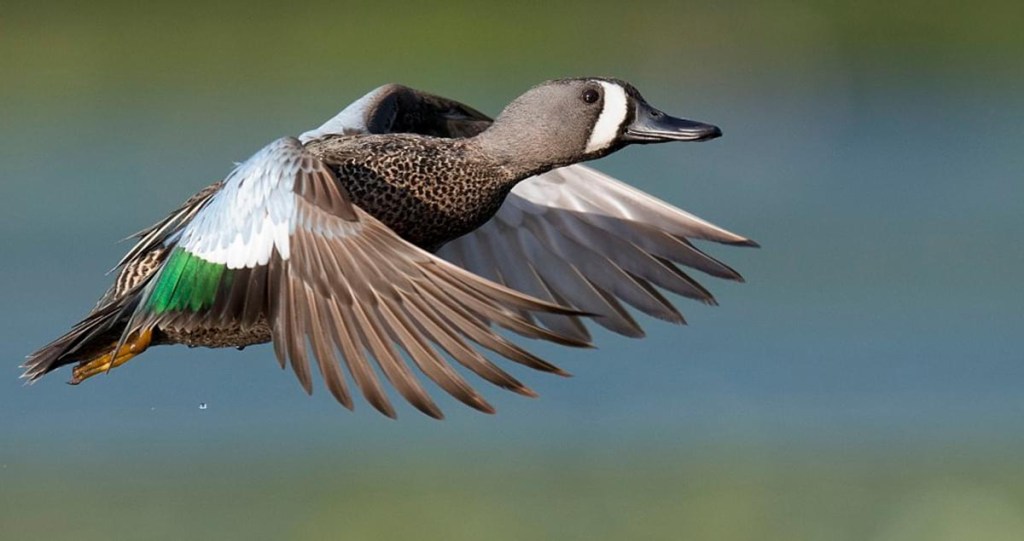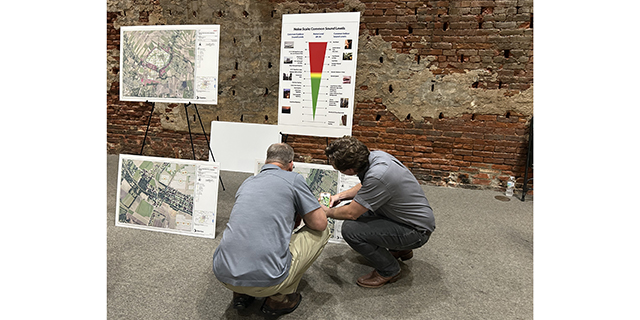Teal season opens with a bang in much of Sportsman’s Paradise
Published 7:45 am Sunday, September 19, 2021

- Blue-winged teal are fair game during Louisiana’s special teal season that ends Sept. 26.
Much of the talk this past week about the special teal season’s opener was about the many, many limits of teal being carried out of the agricultural fields, woods, marshes and swamps.
Numerous duck hunters reportedly got their daily bag limit of six birds, some of them in no time at all when the season got underway Sept. 11. Private leases and public hunting areas both gave up blue-winged teal, the first of the two teal species to find their way south (green-winged teal usually arrive in late October and November).
The special teal season ends Sept. 26.
One hotspot was the Atchafalaya Delta Wildlife Management Area, where a veteran waterfowl biologist reported Wednesday night that duck hunters averaged nearly six birds per person opening day on the WMA in St. Mary Parish. Most Teche Area waterfowlers hunt on the area’s delta around the mouth of the Wax Lake Outlet.
“Atchafalaya Delta probably averaged five ducks per hunter. That’s a really good number for any opener. The past few years they’ve been getting 3 ½, 4 birds per hunter,” Vaughan McDonald, Coastal Lafayette Region biologist manager the past four years for the state Department of Wildlife and Fisheries, said.
That report was as encouraging as any the past few weeks, including the aerial waterfowl survey results provided by the LDWF’s former waterfowl study leader, Larry Reynolds. Reynolds conducted his last waterfowl population estimate Sept. 7-9.
Reynolds, who took another position with LDWF in late August, estimated 281,000 blue-winged teal were in the state during the days leading up to the opener on Saturday. That number was 19 percent higher than last September’s estimate of 236,000, 66 percent higher than the most recent five-year average of 169,000, and 24 percent higher than the long-term average of 227,000.
The veteran waterfowl biologist also noted it was the third consecutive year the numbers in the September survey increased after hitting rock bottom at 59,000 in 2018. Most of this year’s increase over last year was evident in southeast Louisiana (16,000 to 66,000) and in southwest Louisiana (202,000 to 209,000).
He saw the largest concentrations of blue-wings in the freshwater marsh north of White Lake and in flooded rice fields west of Rayne and south of Jennings. Smaller, more numerous groups of teal were scattered across mostly fresh and intermediate marsh.
“The 209,000 blue-wings estimated from southwest Louisiana transects is 44 percent higher than the most recent 10-year average of 145,000 in this region,” Reynolds wrote in his report sent Sept. 11, “but contrary to last year and most other previous September surveys, most were seen in marsh habitats instead of agricultural fields in this region.
“Overall, marsh habitat is greatly improved from the hurricane-impacted conditions in 2020. Far greater abundance and cover of submerged aquatic vegetation was noted on almost every transect in the surveyed region, and expanses of seed-producing annual vegetation were seen in many areas.”
In other words, the table was set for migrating teal in the weeks leading up to the opener.
For example, water levels appeared optimum for foraging ducks in most areas in the region. And for the second straight year, there was a glaring absence of invasive aquatics.
“There are a few areas, like southeast of Calcasieu Lake, where the marsh still appears to be in very poor condition from last year’s impacts (Hurricane Laura and Hurricane Delta), but habitat conditions are predominantly far better than a year ago,” Reynolds pointed out. “Shallow flooding in the agricultural region was much less than last year, limited to managed water and that seemed below average over most of the survey area.”
Reynolds, who will oversee Rockefeller Refuge, White Lake Wetland Conservation area and the Alligator and Wildlife Diversity programs, also saw the mess left by Hurricane Ida when he flew the transects in southeast Louisiana. Nevertheless, he counted an estimated 66,000 blue-winged teal in the region, which is five times greater than the most recent 10-year average of 13,000.
Also, he reported, blue-winged teal were counted on seven of the 10 transects compared to only three in 2020.
“Oddly, there were no concentrations of birds in this survey region, and blue-wings were noted in unusual locations like flooding between sugar cane rows east of Larose, and near a flooded oil refinery in Alliance,” Reynolds wrote in his report. “Indeed, the habitat across southeast Louisiana was severely impacted by the hurricane from western Terrebonne Parish east to the Mississippi River. Marsh was broken up and vegetation was scoured away, flooded and presumably affected by saltwater. We saw very little submerged aquatic vegetation across wide expanses of marsh, including where we have consistently seen dense stands in prior years.”





